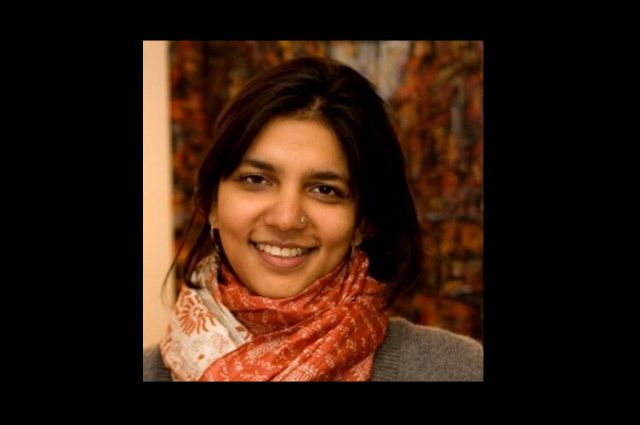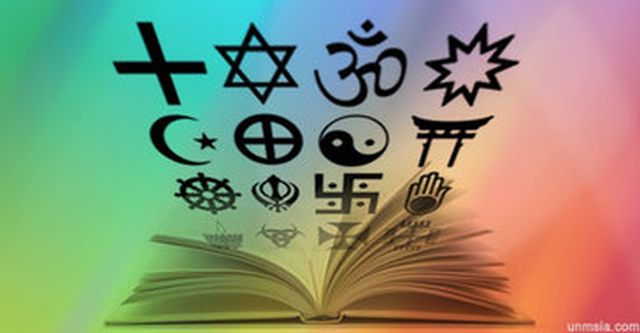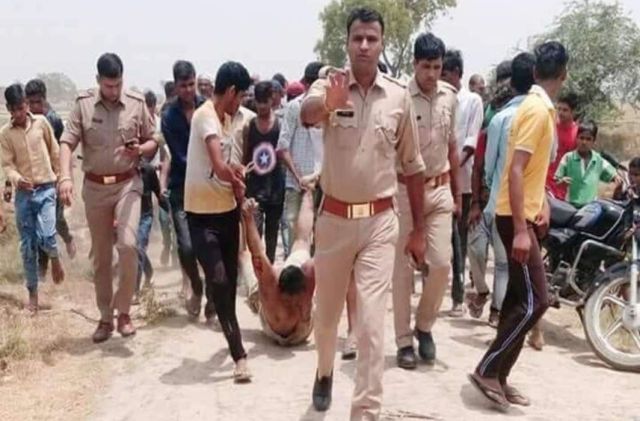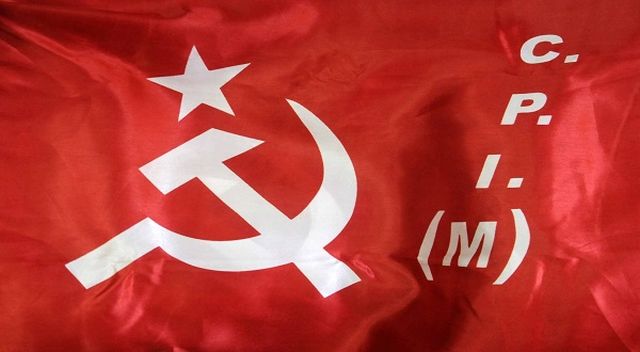
by admin | May 25, 2021 | Interviews, News

Malvika Maheshwari
By Saket Suman,
New Delhi : Attacks against artistes are happening not just because of “the rise of any particular ideology over the last two-three decades”, nor is it a result of “one or two political parties exploiting communalism or religiosity”. Instead, according to Malvika Maheshwari, whose upcoming book “Art Attacks: Violence and Offence-Taking in India” presents a dismal picture of the turmoil that artistes are facing in the country, it is because of the complicated nature of democracy — where votes ratify power.
“To win and maintain this otherwise unattainable power, political parties over time began to exploit entire energies of their cadres and constituencies, first by persuasion, and, if not, by coercion. This capacity of democracy to both birth and nurture violence as a norm rather than as an exception not just placed severe limits on the imagination of the Constitution’s liberal project but its perversion provided for an entire infrastructure for ‘self-appointed gate-keepers of culture’ that helped them convince themselves and their publics of the value of these attacks,” Maheshwari, an Assistant Professor of political science at Ashoka University, told IANS in an interview.
Her book tells the story of violence against artistes in India, marked by the intensifying sense of insecurity, fear, frustration and anger within the art world. As opposed to simply adding to the prevalent commentaries on violent regulation of free speech in India, “Art Attacks: Violence and Offence-Taking in India” focuses on the dynamics of violence in that regulation.
Maheshwari, who was previously a research associate at the Centre for Policy Research here, said that such attacks are not just a phenomenon of the rise of “anti-liberal” sentiments as much as they are a phenomenon of the perversion of the liberal language.
“A lot of the attacks are justified and ‘performed’ by using statements of righteousness, not simply in the religious sense, even if they act in religion’s name, but rather through a morally-charged language of rights, respect, and justice, a language through which they hope to legitimise this violence. The attacks show how much this language has travelled, been copied and manipulated, for instance, through the tussle inherent in the arrangement and prioritisation of free speech over equal respect or dignity,” she added.
She stressed that there are individuals at the forefront of these attacks, those who “physically assault and vandalise”. She said that they come from “a particular social and economic class” and these attacks become a way for them “to resolve anxieties around status, recognition and respect”.
“It enables them to separate themselves from those of their own social group, but also distinguish themselves from their colleagues in their organisations, of which they are part themselves. Most importantly, these men are deeply informed by the glory and success that violent actions in the past may have brought to their leaders.
“So we need to understand that this form of collective violence is dependent on democracy’s rhetoric and processes, and even while being ‘anti-democratic’, they cannot be regarded simply as a deterrent to its routines. It needs also to be contextualised: Given that generally the outbursts of violence — public and private — in its many avatars have not so much been aberrations of India’s democracy as much as its very condition,” Maheshwari contended.
She added that in the last few decades, since these attacks have been on the rise, the context and the pattern of these attacks have undergone many changes. The violence of “offence-taking”, she said, is much more normalised today than it used to be.
Asked of her findings on the “rising culture of offence-taking in India”, Maheshwari shared four core aspects. She maintained that we have “a political culture that is deeply and seemingly irreversibly rooted in criminality, communalism and populism”.
She said that the phenomenon of “recurring attacks could not have found its ground without the expansion of electronic media, and its enhancement through private capital”. Maheshwari contended that it is “absolutely critical to focus on the micro politics of offence-taking and violence” — to understand how it becomes attractive for ordinary citizens, what for them are the motivations and risks involved.
“…very importantly, I do not see these attacks, vandalism and destruction of artworks necessarily as iconoclasm, underlined by its straightforward intention to forcefully and completely erase or annihilate. Most artworks and artists, after the attacks, acquire far greater visibility than before, often at the behest of the attackers themselves.
“What comes across very clearly in my interactions with them is that they see these attacks on art as investment, which inevitably leads to a generation of many more and new images and responses, offering many more opportunities of the kind and keeps the cycle going. As I mention in the book, censorship here is at the most a gratifying by-product, not a goal accomplished. Their interest lies not in what the artwork is about, but what the attacks can make happen,” she said.
To be published by Oxford University Press India in November, “Art Attacks: Violence and Offence-Taking in India” is a result of eight years of exhaustive research and writing.
(Saket Suman can be contacted at saket.s@ians.in)
—IANS

by admin | May 25, 2021 | Opinions
 By Frank F. Islam,
By Frank F. Islam,
“Recent events in India have damaged the country’s image as a vibrant, plural and successful democracy.” That is the opening line of former Foreign Secretary Shyam Saran’s recent article in which he expresses his “growing concern over the rising polarisation and communalism of our social and political discourse”. Saran pointed out: “We pride ourselves in being the most tolerant of people, celebrating our diversity of faith, culture and tradition, ways of life and language. Diversity thrives on sharing; it becomes poison when it becomes an instrument for separating ‘us’ from ‘them’. One cannot construct an over-arching Hindu identity on the basis of creating a binary Hindu-Muslim divide.”
Indeed, we do not need a divide. We need instead to find our spiritual common ground. We cannot find that common ground by accident. It must be a consequence created through strong beliefs and a concerted and sustained effort over time. It must be an outcome that overcomes religious, regional and racial boundaries.
How do we reach that ideal state? We begin with where we are, find our shared values, leverage our strengths and then chart a path to where we want to be.
As an example of discovering our shared values, let me draw upon the teachings of Sir Syed Ahmad Khan, founder of Aligarh Muslim University, and Pandit Madan Mohan Malviya, founder of Banaras Hindu University.
These men were visionaries who saw the world not though religious blinders but through an expansive view of what strong and inclusive faiths can do to unite rather than divide us.
Pandit Malviya instructed us: “India is not a country of the Hindus only. It is a country of the Muslims, the Christians and the Parsees too. The country can gain strength and develop itself only when the people of India live in mutual good will and harmony.”
Sir Syed expressed a similar philosophy, stating that the graduates of Aligarh “…shall go forth through the length and breadth of the land to preach the gospel of free inquiry, of large hearted toleration, and of pure morality.”
While there was not a religious bond between Malviya and Sir Syed, there was undoubtedly a spiritual one. It might be said they were soulmates.
They understood that spirituality is transcendent. They knew that spirit is the invisible force that brings us together regardless of our particular predispositions. They recognised that India would be best as one nation under God.
One nation under God. What would create such a nation? That God would not be a Hindu God, a Muslim God, or a Christian God. That God would be ecumenical and non-denominational. That God would be welcoming to all. That God would not discriminate nor encourage discrimination.
We can do that not by looking to the heavens and to the gods whom we worship. But by looking at the earth and the people and the family that we are. We all have a role to play in that pursuit. Some people have special contributions to make.
Religious leaders can promote interfaith dialogue. They can bring together followers of different persuasions for meaningful conversations. They can promote a dialogue of understanding and a shared sense of community with other faiths. They can call attention to the fact that an attack on one religion is an attack on all religions.
Political leaders can promote a framework of unity and civility. They can ensure that all laws are fair and fairly enforced. They can take affirmative actions to promote an atmosphere of communal peace and harmony. They can promote hope not fear.
Citizen leaders can promote collaboration. They can toil together transcending their creeds to plant the seeds for doing good deeds. They can invest in programmes that cut across and eliminate racial, religious and socio-economic divides. They can help shape a stronger and fairer India.
As the United States diminishes its role as a world leader for democracy under President Donald Trump’s leadership, there is a vacuum to be filled. By finding its spiritual common ground and becoming one nation under God, India can achieve its full potential as a country and become a world leader to fill that vacuum.
(Frank F. Islam is an entrepreneur, civic and thought leader based in Washington, D.C. The views expressed are personal. He can be contacted at ffislam@verizon.net)
—IANS

by admin | May 25, 2021 | News, Politics
 New Delhi : Invoking one of the foremost writers of the early 20th century, Munshi Premchand, Congress President Rahul Gandhi on Friday said communalism — a constant point of reference in many of Premchand’s stories — envelops itself under the garb of culture.
New Delhi : Invoking one of the foremost writers of the early 20th century, Munshi Premchand, Congress President Rahul Gandhi on Friday said communalism — a constant point of reference in many of Premchand’s stories — envelops itself under the garb of culture.
Tweeting in Hindi to pay respect to Premchand, Gandhi said communalism – in an apparent reference to communal forces – was perhaps ashamed of presenting itself in its natural avatar.
Like the fabled donkey dressed in lion’s skin to lord over the jungle, communalism too wraps itself in the garb of culture, he said.
Gandhi’s point of reference was an oft cited essay on communalism and culture by Premchand, originally written in 1934.
The Congress President’s homage to Premchand came four days after the writer’s 138th birth anniversary when several events were held in the country.
—IANS

by admin | May 25, 2021 | Opinions
 By Saeed Naqvi,
By Saeed Naqvi,
Two policemen leading the mob which ultimately lynched a Muslim in Hapur is, of course, part of familiar communalism which has to be revved upon to a higher pitch in order to prepare the ground for the General Elections in 2019. The animal to be protected is not the cow, but power.
For this ultimate goal, incidents like the one in Hapur and the more ghoulish ones before it, hundreds of them, are all essential to maintain conditions of edgy, combustible intolerance. Nothing else seems to be working. Why not continue playing the game one knows best?
An accumulation of such incidents, even their simultaneous eruption on a large scale, amplified by the media, can whip up majoritarianism wherever Muslims are visible and where the majoritarian current has not been weakened by caste polarization. This applies much more to what the British called the “cow belt” but which is more accurately described as the “Hindi belt” – UP, Bihar, Rajasthan, Madhya Pradesh plus Maharashtra and Gujarat.
The 2019 Kurukshetra has to be organized, mobilized, galvanized, whipped up (with the media in tow) only by anchoring communalism to a higher purpose. In other words, “nationalism” has to be invoked. Cow and Love Jihad cannot be given the elevation of nationalism. Mere communalism results in finger pointing at the state apparatus; nationalism justifies the deployment of this apparatus. Whether this deployment is for a national or the nationalist’s cause is open to question.
Cow and Love Jihad cannot be posited as harbingers of national danger. They are not issues endangering national security.
This is where the new turn in Kashmir comes in. Polarization on a massive scale is the electoral requirement now that 2019 looms. This polarization would have been implausible with the BJP in chummy proximity to the PDP’s Mehbooba Mufti in Kashmir.
By sliding away from Mehbooba in the state Assembly, the BJP has turned its back on the Muslims of the Valley, of course. It has also, in effect, freed millions of Hindutva cadres across Bharat Varsha to blow conch shells heralding the great 2019 epic.
The tearing hurry in which the Partition of India was affected may have been one reason why our founding fathers were unable to visualize what we face today. Progressive intellectuals may dismiss “The Guilty Men of India’s Partition” by Ram Manohar Lohia and “The Tragic Story of India’s Partition” by the late H.V. Sheshadri, General Secretary of the RSS until 2000. But would they dismiss with equal contempt Maulana Abul Kalam Azad’s “India Wins Freedom”, particularly the crucial 30 pages which were kept in the custody of the National Archives until 1988? The Maulana is worthy of being read again today.
By the act of Partition and the sleight of hand in Kashmir, India trapped itself into a triangle. This truth has to be continuously repeated because the Indian mind is in the drill to chant a mantra faster than it is to understand a shloka. The three sides of this triangle are actually three axes which are New Delhi-Kashmir; India-Pakistan; Hindu-Muslim. These three axes are, in effect, one comprehensive complex of issues. As in a geometrical theorem, the triangle has to be addressed as a whole. It cannot be sorted out axis by axis, one side after another.
If Ram Madhav, the BJP’s point man for Kashmir, marches off to Srinagar with a carte blanche from the High Command to solve the problem at any cost, there is nothing he can achieve without bringing Pakistan into the bargain. Activation of these two axes will have an impact on the third, Hindu-Muslim axis. This would entail the communal temperature coming down considerably. Will that serve the electoral aims of the party in power in New Delhi?
Of course, it will not, and here, to complicate matters, another triangle comes into play. Since the 80s and 90s the primary triangle has become entangled with a very durable caste triangle. The caste pyramid or triangle instead of being left to social forces, time and attrition to equalize at its own pace was aggravated by the sudden eruption of caste politics in North India in the wake of the Mandal Commission. Communal politics is the upper caste strategy to manage the caste upheaval from below. The upper caste or the ruling class formations project Muslims and other minorities as the “other” to keep the Hindu flock together, the Pyramid in some state of repair. The lower castes, likewise, would like to co opt the Muslim as an enabler in their bid for power and equality.
The Hindu ruling class in its Hindutva Avatar is averse to vertical or horizontal fragmentation. A federal India, corresponding to its regional diversity is anathema to the votaries of Hindu Rashtra. The preservation of this unitary Bharat is an article of faith with those controlling the Delhi Durbar. To mobilize masses towards this end requires a constant harping on an external enemy in cahoots with the enemy within.
The enemy within can be manipulated along the two internal axes of the triangle: New Delhi-Kashmir and Hindu-Muslim. The India-Pakistan axis, essential to complete the triangle cannot be played according to New Delhi’s will alone. External stakeholders include China, Russia, Central Asia and the US. As Charlie Chaplin, having fallen into a drum, his feet and neck protruding in an awkward loop, takes his hat off in an attempted bow, and announces: “Ladies and gentlemen, we are stuck!”
(A senior commentator on political and diplomatic affairs, Saeed Naqvi can be reached on saeednaqvi@hotmail.com. The views expressed are personal.)
—IANS

by admin | May 25, 2021 | News, Politics
 Kolkata : Condemning the armed rallies organised on occasion of Ram Navami in Bengal, the CPI-M on Monday accused state and the Central governments of indulging in “competitive communalism” to divert people’s attention from major issues of life and livelihood.
Kolkata : Condemning the armed rallies organised on occasion of Ram Navami in Bengal, the CPI-M on Monday accused state and the Central governments of indulging in “competitive communalism” to divert people’s attention from major issues of life and livelihood.
The state Communist Party of India-Marxist leadership also questioned the Bengal government’s role in curbing such violence in the name of religion and accused the state ruling’s Trinamool Congress of deliberately creating space for RSS and other Sangh affiliates to hold armed processions in the state.
“There is a planned attempt to break down the secular fabric in the state. This is intentional and politically motivated. The state government, Central government and the forces behind them are intentionally fueling this politics of division, in order to divert people’s attention from their failure in addressing the more pertinent issues of life and livelihood,” CPI-M state secretary Surja Kanta Misra told reporters here.
“Another new phenomena this year has been the competitive communalism by the state ruling party and those in power at the centre.
“The Trinamool Congress also organised Ram Navami rallies across the state this year and RSS welcomed the move. We have even witnessed that BJP and Trinamool Congress leadership in north Bengal’s Alipuduar unitedly organised a Ram Navami rally. In many places Trinamool’s presence in the rallies were academic. They left spaces open for the RSS and other forces,” he alleged.
Taking a swipe at Chief Minister Mamata Banerjee for relaxing the blanket ban on armed rallies in the state, Misra claimed the relaxation encouraged Hindutva outfits to hold so many armed rallies on Ram Navami on Sunday.
Noting that the Left parties raised questions on the state administration’s role after so many people rallied with arms during Ram Navami last year, the CPI-M leader questioned how the rallyists were allowed gather so many weapons and claimed it is certain that preparations of such magnitude cannot be made in short while, bypassing the local administration.
Warning about more such rallies to be held in the state in the next few days, Misra demanded arrest of political leaders involved in such preparations and sought an all-party meeting on the issue.
“We demand these issues to be immediately addressed. The people who were leading these rallies, are leaders of certain political parties. Both the leaders of state’s ruling party and the party ruling at the centre have been involved in promoting such actions. These people should be immediately arrested. But there is no such actions yet.
“If needed, the state government should call an all party meeting to neutralise the tensions and stop rumours from spreading. There is news that similar rallies would be held at some places today (Monday) and tomorrow (Tuesday) as well. Those need to be curbed,” he added.
—IANS





